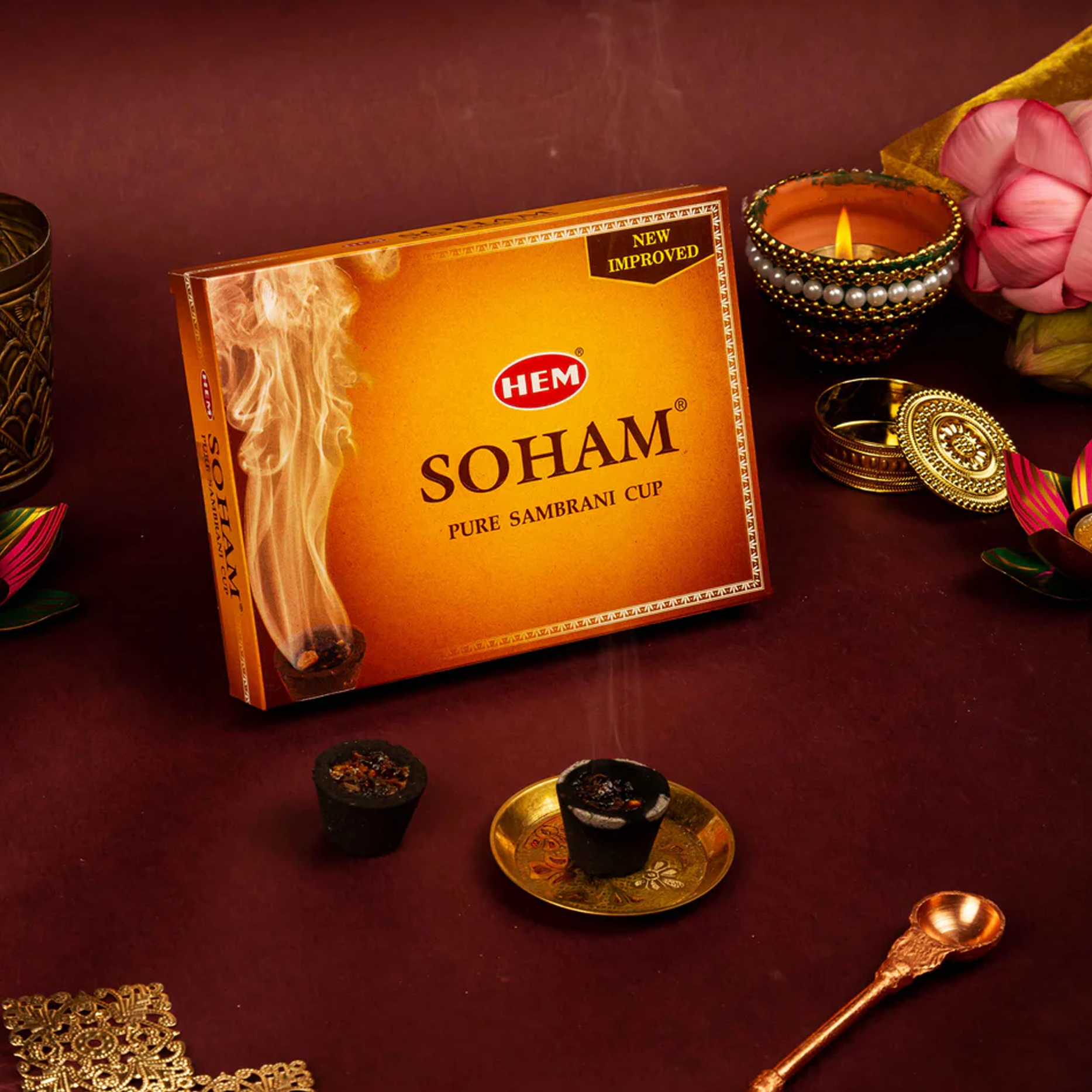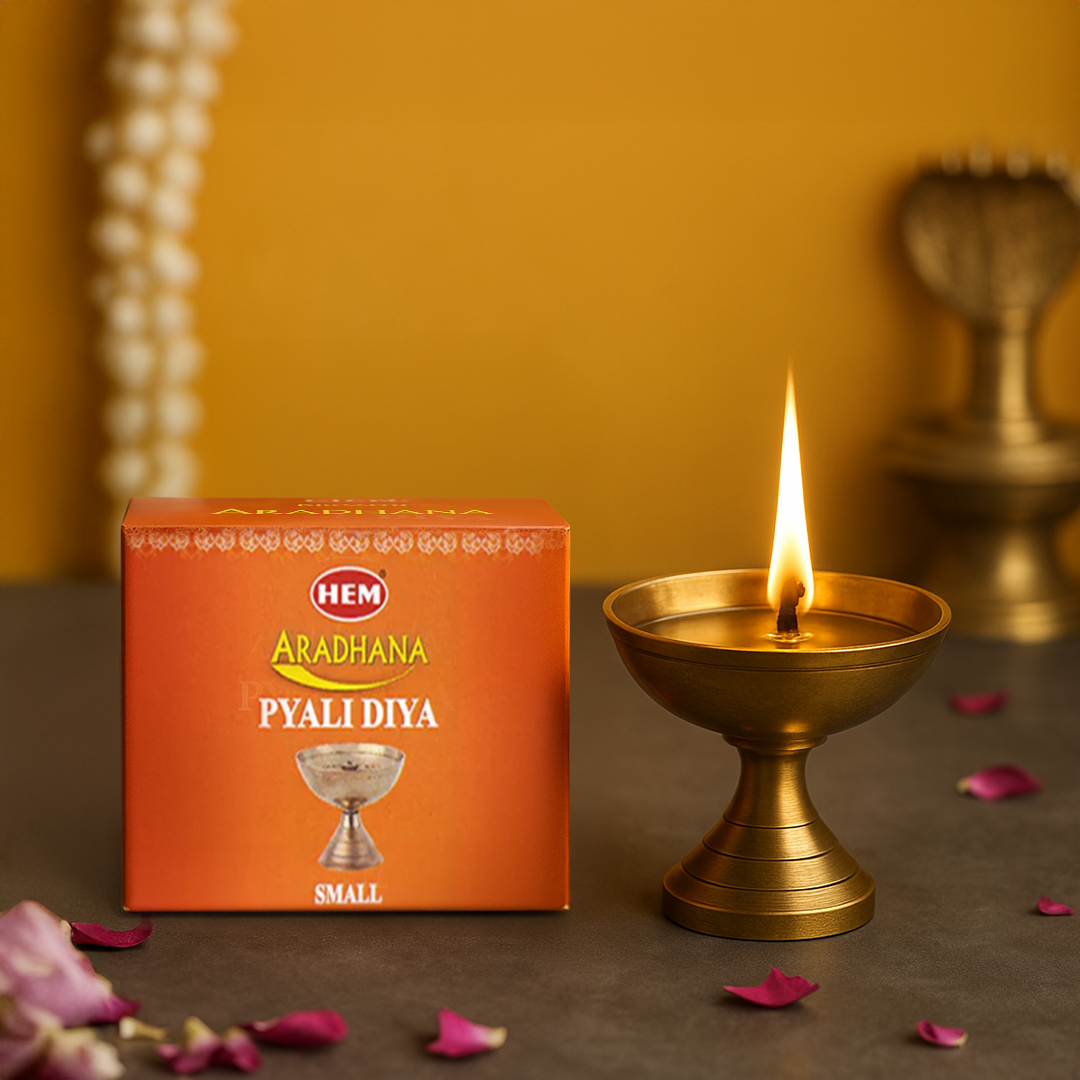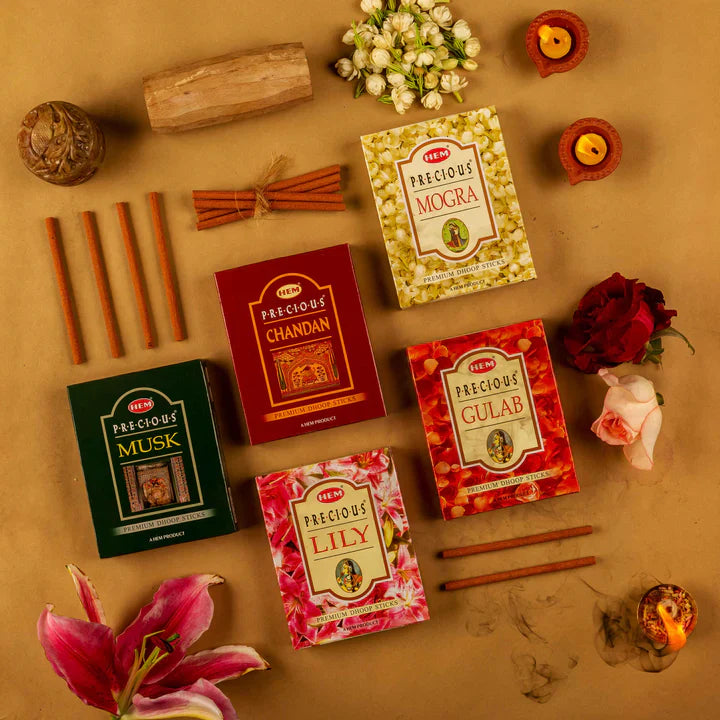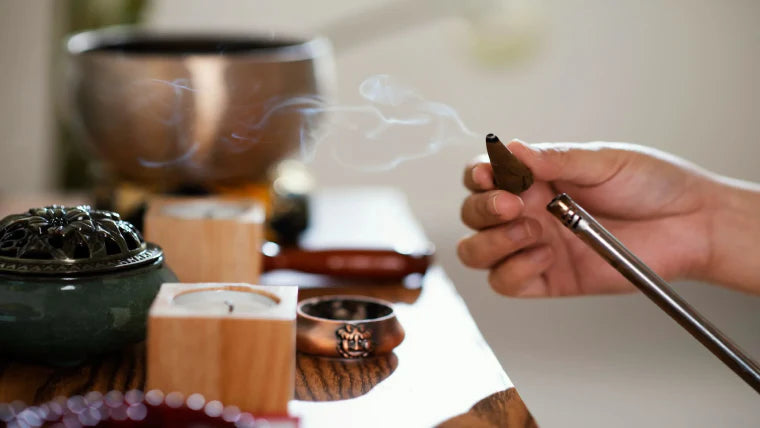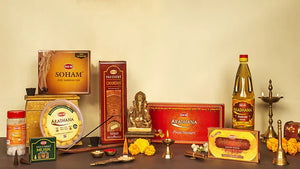Dhoop burning is a tradition that's been around for a long time, filling spaces with pleasant scents and holding a significant spiritual meaning. But have you ever wondered about the different types of dhoop available? This guide will explore the differences between wet dhoop and dry dhoop, helping you pick the best one for you. We'll cover things like fragrance strength and burning time, explaining what makes each type special and how they can enhance your home or rituals.
What is Wet Dhoop?
Wet dhoop, also known as Guggal or Loban in different regions, offers a unique and powerful sensory experience. Unlike dry dhoop sticks, wet dhoop is not pre-formed. It is a moldable paste made from a blend of natural ingredients. These ingredients may include fragrant resins, aromatic woods (such as sandalwood), essential oils, herbs, and sometimes flower petals. The paste is then hand-shaped, with cones being the most common form. Wet dhoop is renowned for its strong and long-lasting scent, making it a popular choice for religious ceremonies, meditation, and creating a calming and focused atmosphere.
How to Burn Wet Dhoop
Wet dhoop has a slightly unique approach for burning. Take a look at the steps below to see how it’s done:
- Prepare Your Dhoop Burner: Select a dhoop burner specifically designed for wet dhoop. These burners typically have a flat platform or a small well to hold the dhoop and collect the ashes. Ensure the burner is clean and free of any leftover residue from previous uses. Place it on a stable heat-resistant surface away from flammable materials.
- Shape the Dhoop (if necessary): Some wet dhoops come pre-shaped as cones or small logs. However, others might be a shapeless paste or dough. If so, take a small amount of the wet dhoop and gently mold it into a cone shape using your fingers.
- Light and Let it Smolder: Hold the tip of the wet dhoop cone or shaped dhoop over a flame from a match or lighter. Let it burn for a few seconds until a small flame appears. Gently blow out the flame, allowing the dhoop to begin smoldering.
- Place the Dhoop in the Burner: Carefully transfer the smoldering dhoop to the designated area on your dhoop burner.
- Fan for Fragrance: To encourage the release of the dhoop's fragrance, use a feather, a handheld fan, or even your hand to gently fan the smoke. Make sure you do not blow directly on the dhoop itself.
- Enjoy the Aroma: Sit back, relax, and allow the calming fragrance of wet dhoop to fill your space. It's a perfect way to enhance meditation, prayer, or simply create a serene atmosphere in your home.
What is Dry Dhoop?
Dry dhoop, also known as agarbatti or incense sticks, is a popular and convenient way to experience the aromatic and spiritual benefits of dhoop. Unlike its wet counterpart, dry dhoop comes in pre-rolled sticks, making it easy to light and use.
Here at Hem Fragrances, we offer a wide variety of dry dhoop options to suit your preferences:
Dhoop Cones
Our dhoop cones are carefully made to create a stronger and longer-lasting fragrance. Light the tip and let it burn slowly, releasing its scent in a gentle stream of smoke. Choose from a variety of calming scents, including white sage, sandalwood (chandan), jasmine, lavender, patchouli, and musk.
Dhoop Sticks
Need a portable fragrance option? Our dhoop sticks are a great choice! Light the end of the stick and enjoy the gentle aroma as it fills the room. We offer a wide range of scents in dhoop sticks, including classic sandalwood (chandan), warm saffron, delicate lily, and the ever-popular rose.

Dhoop sticks to enhance your rituals! Discover the magic of Hem fragrance dhoop sticks—buy today for a soothing and aromatic experience.
How to Burn Dry Dhoop
Burning dry dhoop is a simple process that can quickly fill your space with fragrance. Here's what you'll need:
- Dhoop Stand: A designated dhoop stand with a tray to catch falling ash is ideal. Alternatively, a heat-resistant plate or dish can work.
- Match or Lighter: To ignite the dhoop cone or block.
- Ventilation: As dry dhoop produces some smoke, ensure proper ventilation in the room.
Light the tip of your dry dhoop and gently blow out the flame once it catches. Place it on your dhoop stand, allowing the ember to slowly burn and release its aromatic fragrance. Enjoy the calming scents as they fill your surroundings!
Difference Between Wet Dhoop and Dry Dhoop
| Aspect | Wet Dhoop | Dry Dhoop |
|---|---|---|
| Definition | Wet Dhoop refers to a type of incense that is moist or damp. It is often made from natural ingredients mixed with water or other liquids. | Dry Dhoop refers to incense that is dry and solid, typically made from a mixture of powdered natural ingredients without any added moisture. |
| Ingredients | Made from natural resins, essential oils, herbs, and other aromatic substances mixed with a liquid binder. | Made from natural resins, herbs, powdered wood, and aromatic substances without any added liquid. |
| Form | Usually comes in a paste or dough-like consistency, sometimes shaped into sticks or cones. | Typically found in the form of sticks, cones, or powdered dhoop. |
| Burning Time | Burns slowly due to its moisture content, providing a longer-lasting fragrance. | Burns more quickly compared to wet dhoop due to its dryness. |
| Aroma Intensity | Often has a stronger, more intense aroma because the moisture helps to release essential oils more effectively. | May have a less intense aroma as the dry ingredients burn faster and the fragrance disperses quickly. |
| Ease of Use | Requires a holder or surface that can accommodate its moist form; may be slightly more difficult to light and maintain. | Easier to use and light; can be placed in standard incense holders. |
| Storage | Needs to be stored in a sealed container to maintain moisture; has a shorter shelf life if not stored properly. | Can be stored in a dry, cool place; has a longer shelf life due to its lack of moisture. |
| Usage | Often used in religious and spiritual ceremonies for prolonged meditation or rituals. | Commonly used for everyday purposes, such as creating a pleasant atmosphere or during shorter meditation sessions. |
| Cultural Significance | Prominent in specific cultural practices where prolonged incense burning is desired, such as in certain Hindu and Buddhist rituals. | Widely used across various cultures for its convenience and ease of use in daily life and shorter rituals. |
| Production Process | Involves mixing aromatic substances with water or other liquids to form a paste, which is then shaped and allowed to set. | Involves blending dry aromatic substances and forming them into sticks, cones, or powder without any liquid binding. |
| Cost | Generally, more expensive due to the ingredients and production process. | Usually less expensive and more widely available due to simpler production. |
| Environmental Impact | May use natural binders and fewer synthetic materials, potentially more eco-friendly. | Depending on ingredients, may use synthetic binders; environmental impact varies. |
Choosing Between Wet and Dry Dhoop
Selecting between wet and dry dhoop ultimately comes down to personal preferences and the context in which you'll be using it. For people who are seeking a powerful and immersive experience, wet dhoop's intense fragrance and thick smoke might be ideal. However, if you have a smaller space or prioritise minimal smoke, dry dhoop's subtler aroma and cleaner burn might be preferable. Cultural and spiritual traditions can also influence your choice. Certain ceremonies might call for a specific type of dhoop. Finally, consider the environmental impact. While both types are generally natural, some wet dhoops may contain synthetic binders. If eco-friendliness is a concern, explore brands like HEM Fragrances which are committed to using sustainable ingredients for both wet and dry dhoop.

